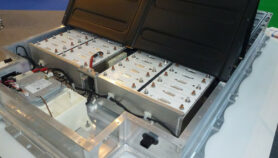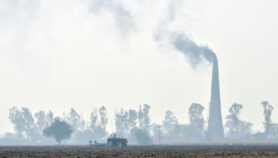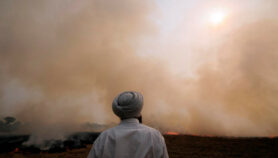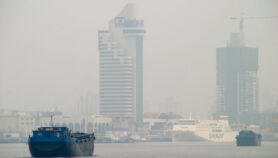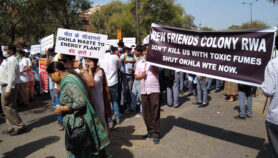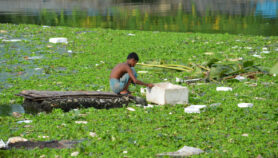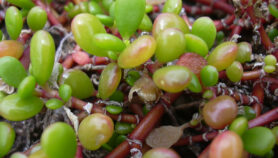23/04/19
Asia Pacific Analysis: Plastic scourge threatens Pacific
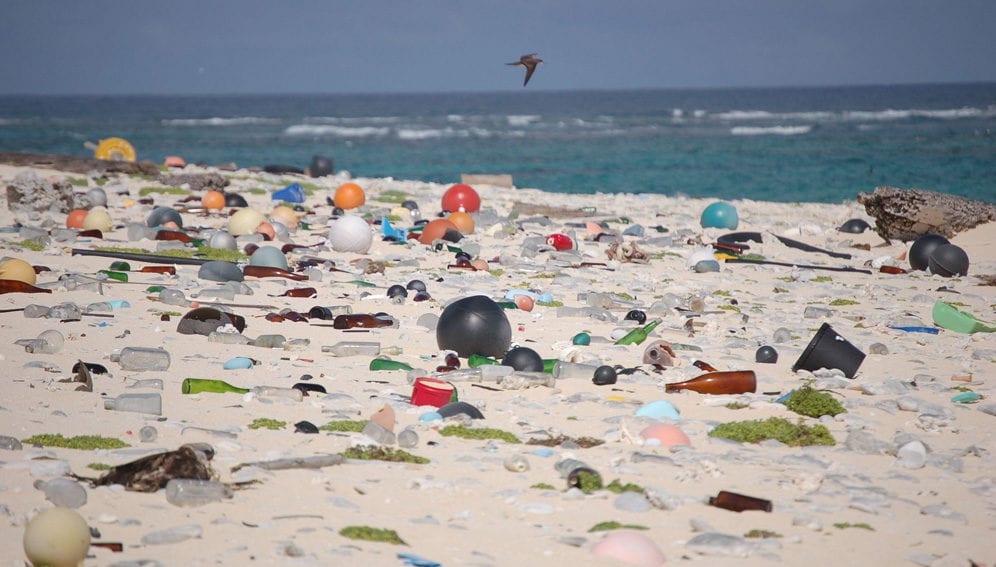
By: Crispin Maslog
Send to a friend
The details you provide on this page will not be used to send unsolicited email, and will not be sold to a 3rd party. See privacy policy.
Plastic waste is now seriously threatening marine life in the Pacific Ocean.
A young whale that washed up ashore in Davao City, southern Philippines, last month (18 March), was found by marine biologists to have died from “plastic poisoning”.
The biologists extracted 40 kilograms of plastic bags, including 16 rice sacks, four banana plantation bags and multiple shopping bags from the stomach of the Cuvier’s beaked whale and pronounced it as having died from “gastric shock.” (1)
“Indiscriminate waste is associated with poverty… Addressing poverty is crucial to a just and sustainable solution to the garbage problem”
Crispin Maslog
Going by journalism news values, this tragedy is still a novelty. But it may not be that way for long. In 2018, another whale (a pilot whale) choked to death in Thailand after swallowing more than 80 plastic bags weighing about eight kilograms.
Marine biologist Darrell Blatchley, who owns the D’Bone Collector Museum of Davao City that performed the autopsy on the Philippine whale last month, said that in over a decade of examining dead whales and dolphins, they found that 57 of the aquatic mammals had died from accumulated rubbish and plastic in their stomachs. (1)
The types of plastic products that find their way into the insides of whales, dolphins and turtles are mostly wrappers and plastic bags. These are often referred to as single-use plastics and used by shoppers all over the world.
A 2017 report by Ocean Conservancy stated that China, Indonesia, the Philippines, Thailand, Sri Lanka and Vietnam have been dumping more of this type of plastic waste into the ocean than the rest of the world combined.
However, several of these countries are taking steps to remedy the situation.
Last year, Indonesia declared a "garbage emergency" on the beaches of the tourist island of Bali, and also drew up a National Action Plan on Marine Plastic Debris to cut down the amount of waste reaching the ocean. Thailand is planning to impose a new tax on disposable plastic shopping bags while introducing bodegradable alternatives to these. The Philippines closed its main white sand tourist island of Boracay for six months in 2018 to literally scrub the island clean and get rid of its garbage; mostly seweage and single-use plastic packaging scattered by tourists and shoppers. Additionally, in January this year, the Philippine government launched a massive dredging and de-silting of Manila Bay and its main tributary, the Pasig River. This river brings dirty water and semi-solid waste from the country’s biggest lake, Laguna Lake, into Manila Bay. Plastic bags, rubber tyres, car parts, construction material, household utensils and bric-a-brac were recovered from the depths of the bay. (2)
Coral reefs and plastic
Dead whales choking on plastic bags and sea turtles eating plastic material after mistaking it for jellyfish are dramatic. But coral reefs dying from plastic contamination may be more worrisome. This time, we are talking not just about single-use plastic bags that litter our oceans, but of waste that is more insidious.
Marine debris that include fishing nets, diapers, water bottles, electronic products, computer parts, household wastes such as combs and cosmetic containers, cars and machine parts and other materials litter our seas and endanger our coral reefs in the Australia-Asia region.
Plastic bags comprise only one type of the major threats to coral reefs. This synthetic substance is driving up disease rates even among reefs that have resisted other threats, marine scientists say.
Marine disease ecologist Joleah Lamb and his team have spent years studying the Great Barrier Reef and the reefs off Indonesia, Myanmar and other parts of South-East Asia. They have discovered how human activities—from creating pollution to commercial fishing to scuba diving and other tourist activities—affect the health of corals. (3)
Considering the 11 billion pieces of plastic Lamb’s science team estimates are entangled on reefs from Australia to Myanmar, “plastics could significantly affect the health of reefs that are not only linchpins of ocean biodiversity but key to many economies in the region.” (3)
Great Pacific Garbage Patch
Some 8 million tonnes of plastic waste end up in oceans every year, representing 80 per cent of all ocean litter, according to the UN Environment Programme. A UNEP study in March found that 1.8 trillion pieces of trash accumulating in the Pacific Ocean, known as the Great Pacific Garbage Patch, could amount to 16 times more waste than previously thought.
The Great Pacific Garbage Patch spans waters from the West Coast of North America to Japan. This convergence zone is where warm waters from the South Pacific meet up with cooler waters from the Arctic. It acts as a circular highway that moves debris from one patch to another.
This “Garbage Patch” is a system of four circular ocean currents formed by the Earth’s wind patterns and the forces created by the rotation of the planet. The four currents move in a clockwise direction around an area of 20 million square kilometres and draw floating debris to form one patch.
Silent scourge threatens Pacific
Plastics are indeed the silent scourge of the world’s oceans that only few of us landlubbers see, although scientists have been warning about them for years. But not to forget, they also litter our land. Waste such as water bottles, cosmetic containers, combs, handbags, trays, plates, shoes, slippers, wallets, belts, fishing nets, coffee mugs, household plumbing, etc.— these have become a bane of societies and a problem to dispose. If we are not careful, they may edge us out of our habitations and comfort zones.
We should do something about this problem now. We know the different types of plastic and their uses. Some are recycled more than others.
This is how to interpret packaging labels:
- Polyethylene terephthalate (PETE or PET) – recyclable
- High-density polyethylene (HDPE) – recyclable
- Polyvinyl chloride (PVC) – recyclable but consult your recycler
- Low-density polyethylene (LDPE) – recyclable but consult your recycler
- Polypropylene (PP) – not recyclable
- Polystyrene or styrofoam (PS) – not recyclable
- Miscellaneous plastics (includes polycarbonate, polylactide, acrylic, acrylonitrile butadiene, styrene, fiberglass, and nylon)
The first line of defence is to educate users and people to classify them at the source—in the homes, offices and living spaces. The second line is to dispose of the waste properly — by incineration, use as fertilisers or other byproducts, or by other appropriate recycling methods.
This year, the non-profit Earth Day Network organised what it billed as Earth’s largest cleanup crew with thousands of volunteers from over 193 nations doing coordinated clean ups on Earth Day yesterday, 22 April. The goal is to remove billions of pieces of trash from neighbourhoods, beaches, oceans, rivers, lakes, trails, parks, etc. to make earth safe and clean for wildlife and humans. (4)The UN campaign seems to be pressing the right buttons – push people to remove what garbage there is now – and educate people to reduce, reuse and recycle. But there is a missing ingredient.
Indiscriminate waste is associated with poverty. Many of the poor scavenge and live on trash. Moreover, making products greener and healthier often means making them more expensive and beyond the reach of the poor. Addressing poverty is crucial to a just and sustainable solution to the garbage problem.
Crispin C. Maslog, former journalist with Agence France-Presse, is an environmental activist and former science professor, Silliman University and University of the Philippines Los Baños, Philippines. He is a founding member and now Chair of the Board, Asian Media Information and Communication Centre, Manila.
This piece was produced by SciDev.Net’s Asia & Pacific desk.
* This article was amended on 25 April 2019 to remove the contentious ranking of the top plastic polluting countries and to emphasise the initiatives being undertaken by some South-East Asian countries to mitigate the impact of plastic pollution.
References
1. Dead whale washed up in Philippines had 40kg of plastic bags in its stomach, The Guardian, March 19, 2019. Hannah Ellis-Petersen, South East Asia correspondent.
2. World Bank Group pushes study of plastic waste in Pasig River, UNTV News and Rescue, UNTV News, March 19, 2019
3. Scientific American, Where Plastic Goes, Coral Disease Follows, By Andrea Thompson, January 30, 2018
4. [email protected]. The Great Global Cleanup, Let’s create clean communities! Be Part of the Largest Environmental Volunteer Event in History, In honor of the 50th anniversary of Earth Day in 2020.







